

George Francis Grimwood LRIBA (1874 - 15 Jan 1938) was an 20th-century engineer and architect based in Nottingham. [1]


George Francis Grimwood LRIBA (1874 - 15 Jan 1938) was an 20th-century engineer and architect based in Nottingham. [1]
He was born in 1874 in Cardiff, the son of Dennis Grimwood (1833–1904) and Harriet Fellows (b. 1847)
He was articled to William Henry Dashwood Caple in Cardiff from 1889 to 1893, and afterwards remained as his assistant.
He became an engineer and architectural assistant in the Borough Engineer's department of Cardiff Corporation in 1893 and in 1899 he was employed in the Birmingham Corporation Architects' Department. He commenced independent practice in 1904 in Monmouth, based at Atheneum Buildings, Monmouth and was Borough Surveyor. In 1910 he became a Licenciate of the Royal Institute of British Architects.
He married Elizabeth Bertha Hoddell, younger daughter of Philip Hoddell of Lewstone, Whitchurch, Herefordshire, on 31 October 1907 at St Swithin's Church, Ganarew, Herefordshire. [2] They had one son, Philip Francis Grimwood (1912–2004)
He became an Engineer and Surveyor in Beeston, Nottinghamshire around 1917. and later practiced as an architect with offices on Parliament Street in Nottingham.
Later in life they lived at 12 Park Street, Beeston.
He died on 15 January 1938 at Ruthin Castle, Denbighshire. He was cremated in Birkenhead Crematorium. He left an estate valued at £2,353 3s 2d (equivalent to £189,800in 2023). [3]

Attenborough is a village in the Borough of Broxtowe in Nottinghamshire, England. It forms part of the Greater Nottingham area and is 4+1⁄2 miles (7.2 km) to the south-west of the city of Nottingham, between Long Eaton and Beeston. It adjoins the suburbs of Toton to the west and Chilwell to the north. The population of the ward, as at the 2011 Census, was 2,328.

Frederick Ball LRIBA was an architect based in Nottingham. He was Sheriff of Nottingham from 1906–07, and Mayor of Nottingham from 1913–1914.

Harry Gill LRIBA was an architect based in Nottingham.
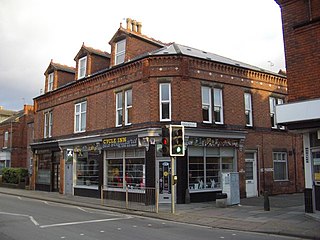
Walter Owen Hickson was an English architect and surveyor based in Nottingham.
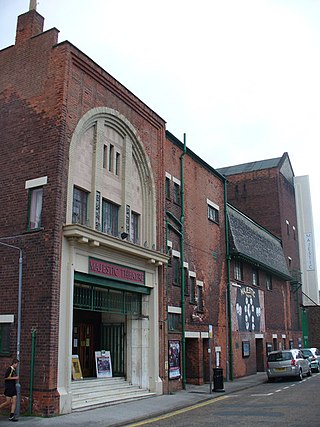
Alfred John Thraves FRIBA was an architect based in Nottingham who specialised in cinema design.
St John's Grove, Beeston is a conservation area in Beeston, Nottinghamshire.
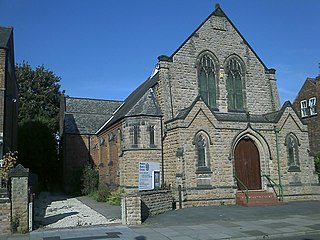
Charles Nelson Holloway was an architect based in Nottingham.

Arnold Plackett LRIBA was an 20th century architect based in Long Eaton.

Joseph Warburton LRIBA MRAIC was an 20th century architect based in Beeston, Nottinghamshire and Regina, Saskatchewan.

High Road, Beeston is a pedestrianised shopping street in Beeston, Nottinghamshire. It runs from Beeston Square to Humber Road.
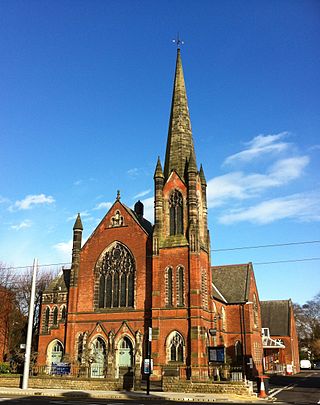
Chilwell Road, Beeston is street in Beeston, Nottinghamshire. It runs from its junction with High Road, Beeston in Beeston Square to the Hop Pole public house.

Station Road is a street in Beeston, Nottinghamshire. It runs from its junction with High Road, in Beeston Square, to the town's railway station.

Beeston Fields Drive is a street in Beeston, Nottinghamshire, England. It runs from its junction with Wollaton Road, Beeston, to Cow Lane, Bramcote.

James Huckerby was a 19th-century builder and architect based in Beeston, Nottingham.

John Frederick Dodd LRIBA was an architect based in Long Eaton, Derbyshire.

John Bowley LRIBA was an architect and engineer based in England who worked mainly in Beeston, Nottinghamshire and Hastings.

Alexander Wilson LRIBA was an architect based in Nottingham. Some of his most significant work include the 900 houses built on the Beeston Rylands estate in the late 1930s.
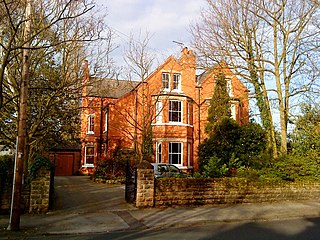
Thomas Woolston was an architect and builder.
Douglas Leonard Booth was an architect, surveyor and civil engineer based in Beeston, Nottinghamshire.

Field Weston was an architect based in Nottingham.